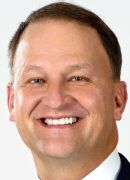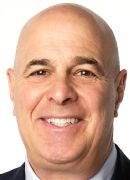lol. skawildcat you do need to participate in the other parts of the forum. I'm not posting everything and not everyday. I never intended on posting everyday and I won't.
I'm only posting one:
West Coast showcases: Lonzo Ball shines in Long Beach
It was wheels up to Las Vegas on Saturday for the Phase1 Hoops Top 40 Showcase to check out the up-and-coming talent in Sin City. Local talents like Troy Brown, Charles O'Bannon Jr. and Markus Howard were not available for the event, but there were a plethora of intriguing underclassmen, most notably in the class of 2019. After a short stint in Las Vegas it was wheels down to Long Beach for the Ron Massey Memorial Fall Hoops Classic, where close to 40 Division I prospects competed with their respective high school teams:
Lonzo was 'Ball-in' in Long Beach
Lonzo Ball, No. 11 in the ESPN 100, took home MVP honors in the 2nd Annual Ron Massey Memorial Fall Hoops Classic. The future UCLA Bruin impacts the game like few other prospects in the national class of 2016. His passes in transition are reminiscent of former North Carolina standout and current Philadelphia 76er Kendall Marshall, but there is so much more to his game than what Marshall brings to the table.
Ball is arguably the best rebounder at his size in the country and his instincts and active hands on defense are peerless. In a semifinal tilt against Sierra Canyon, Ball found his team down 13 with roughly six minutes to go against the likes of ESPN Super 60 talents Cody Riley and Ira Lee, as well as a lightning-quick backcourt of Devearl Ramsey and Remy Martin. However, after a couple of deep 3s, a slashing drive, as well as a couple of clutch assists (one of which was to his brother Li Angelo Ball for the game- winner), Ball was the catalyst for what was one of the more startling comebacks in recent memory.
Five Observations
1. Bishop Montgomery boasts one of the more talented perimeter attacks in the west in juniors Jordan Schakel and Ethan Thompson (the brother of Oregon State freshman Stephen Thompson Jr.) as well as sophomore sensation David Singleton. All three can nail jump shots from deep and their respective basketball IQs are high. Schakel compares favorably to current NBA player Landry Fields (Toronto Raptors) as well as former NBA sharpshooter Jason Kapono.
2. There might not be a more explosive scorer in the west than ESPN Super 60 prospect Charles O'Bannon Jr. He has that prototypical wing-type frame with very long arms and he can convert shots from all three levels. UCLA, Washington, NC State, California, Kansas, Arizona, and UNLV are heavily involved with O'Bannon Jr., the son of the former UCLA star.
3. Redondo Union High School coach Reggie Morris Jr. is known for developing late-blooming guard-types -- Russell Westbrook and Delon Wright come immediately to mind. Next on the Morris Jr. conveyor belt are fast-rising seniorMorgan Means as well as sharpshooting junior Ryse Williams. Means doesn't have any offers as of yet, but if he continues his improvement there should be schools at the Division I level that will take a peek at this wiry combo-guard with a solid stroke.
4. Long Beach Poly didn't have two of their starters, as 6-7 junior Myles Johnson was nursing an injury and Drew Buggs was on an official visit to Hawaii. However, that didn't stop 6-6 rugged 4-man Zafir Williams and slick sophomore Darryl Polk from leading the Jackrabbits to the championship. Williams is a tough matchup due to his physicality and soft shooting touch while Polk is right there with the quickest guards in Southern California.
5. Sierra Canyon is blessed with a plethora of talent, most of which resides in the class of 2017. ESPN 60 forward Ira Lee and fast-rising point guard Remy Martin put together dazzling performances during the event. Lee is a productive 4-man who can finish with either hand, rebounds in and out of his area and boasts a smooth shooting touch out to the elbow, while Martin dazzled the crowd with his explosive moves to the rim and a much-improved 3-point shooting touch.
Phase1 Hoops notebook
The city of Las Vegas' class of 2019 is looking promising, with the likes of 6-3 Jace Roquemore (Foothill), 6-0 Nick Blake (Shadow Ridge), and 6-2 Sedrick Hammonds (Clark) all emerging. All three possess Division I potential due to their lengthy frames, solid ball skills, and an innate ability to get their teammates involved with the pass. Also, keep an eye on an intriguing 8th grader in 6-4 Julian Strawther. Strawther has a sinewy frame, evolving ball skills, and he's athletic.
Although most of the young talent resided in Las Vegas, there were a trio of California underclassmen who exhibited Division I potential in sophomores Jordan Campbell (a 6-1 lefty who can score) and Jonathan Ned (a 6-6, willowy 4-man who can pass) as well as 6-1 freshman scorer Makani Whiteside.
On the recruiting front, ESPN Super 60 prospect Troy Brown has unofficial visits to Stanford and Cal at the end of this month, as well as to Arizona and Utah in October.
I'm only posting one:
West Coast showcases: Lonzo Ball shines in Long Beach
It was wheels up to Las Vegas on Saturday for the Phase1 Hoops Top 40 Showcase to check out the up-and-coming talent in Sin City. Local talents like Troy Brown, Charles O'Bannon Jr. and Markus Howard were not available for the event, but there were a plethora of intriguing underclassmen, most notably in the class of 2019. After a short stint in Las Vegas it was wheels down to Long Beach for the Ron Massey Memorial Fall Hoops Classic, where close to 40 Division I prospects competed with their respective high school teams:
Lonzo was 'Ball-in' in Long Beach
Lonzo Ball, No. 11 in the ESPN 100, took home MVP honors in the 2nd Annual Ron Massey Memorial Fall Hoops Classic. The future UCLA Bruin impacts the game like few other prospects in the national class of 2016. His passes in transition are reminiscent of former North Carolina standout and current Philadelphia 76er Kendall Marshall, but there is so much more to his game than what Marshall brings to the table.
Ball is arguably the best rebounder at his size in the country and his instincts and active hands on defense are peerless. In a semifinal tilt against Sierra Canyon, Ball found his team down 13 with roughly six minutes to go against the likes of ESPN Super 60 talents Cody Riley and Ira Lee, as well as a lightning-quick backcourt of Devearl Ramsey and Remy Martin. However, after a couple of deep 3s, a slashing drive, as well as a couple of clutch assists (one of which was to his brother Li Angelo Ball for the game- winner), Ball was the catalyst for what was one of the more startling comebacks in recent memory.
Five Observations
1. Bishop Montgomery boasts one of the more talented perimeter attacks in the west in juniors Jordan Schakel and Ethan Thompson (the brother of Oregon State freshman Stephen Thompson Jr.) as well as sophomore sensation David Singleton. All three can nail jump shots from deep and their respective basketball IQs are high. Schakel compares favorably to current NBA player Landry Fields (Toronto Raptors) as well as former NBA sharpshooter Jason Kapono.
2. There might not be a more explosive scorer in the west than ESPN Super 60 prospect Charles O'Bannon Jr. He has that prototypical wing-type frame with very long arms and he can convert shots from all three levels. UCLA, Washington, NC State, California, Kansas, Arizona, and UNLV are heavily involved with O'Bannon Jr., the son of the former UCLA star.
3. Redondo Union High School coach Reggie Morris Jr. is known for developing late-blooming guard-types -- Russell Westbrook and Delon Wright come immediately to mind. Next on the Morris Jr. conveyor belt are fast-rising seniorMorgan Means as well as sharpshooting junior Ryse Williams. Means doesn't have any offers as of yet, but if he continues his improvement there should be schools at the Division I level that will take a peek at this wiry combo-guard with a solid stroke.
4. Long Beach Poly didn't have two of their starters, as 6-7 junior Myles Johnson was nursing an injury and Drew Buggs was on an official visit to Hawaii. However, that didn't stop 6-6 rugged 4-man Zafir Williams and slick sophomore Darryl Polk from leading the Jackrabbits to the championship. Williams is a tough matchup due to his physicality and soft shooting touch while Polk is right there with the quickest guards in Southern California.
5. Sierra Canyon is blessed with a plethora of talent, most of which resides in the class of 2017. ESPN 60 forward Ira Lee and fast-rising point guard Remy Martin put together dazzling performances during the event. Lee is a productive 4-man who can finish with either hand, rebounds in and out of his area and boasts a smooth shooting touch out to the elbow, while Martin dazzled the crowd with his explosive moves to the rim and a much-improved 3-point shooting touch.
Phase1 Hoops notebook
The city of Las Vegas' class of 2019 is looking promising, with the likes of 6-3 Jace Roquemore (Foothill), 6-0 Nick Blake (Shadow Ridge), and 6-2 Sedrick Hammonds (Clark) all emerging. All three possess Division I potential due to their lengthy frames, solid ball skills, and an innate ability to get their teammates involved with the pass. Also, keep an eye on an intriguing 8th grader in 6-4 Julian Strawther. Strawther has a sinewy frame, evolving ball skills, and he's athletic.
Although most of the young talent resided in Las Vegas, there were a trio of California underclassmen who exhibited Division I potential in sophomores Jordan Campbell (a 6-1 lefty who can score) and Jonathan Ned (a 6-6, willowy 4-man who can pass) as well as 6-1 freshman scorer Makani Whiteside.
On the recruiting front, ESPN Super 60 prospect Troy Brown has unofficial visits to Stanford and Cal at the end of this month, as well as to Arizona and Utah in October.





















